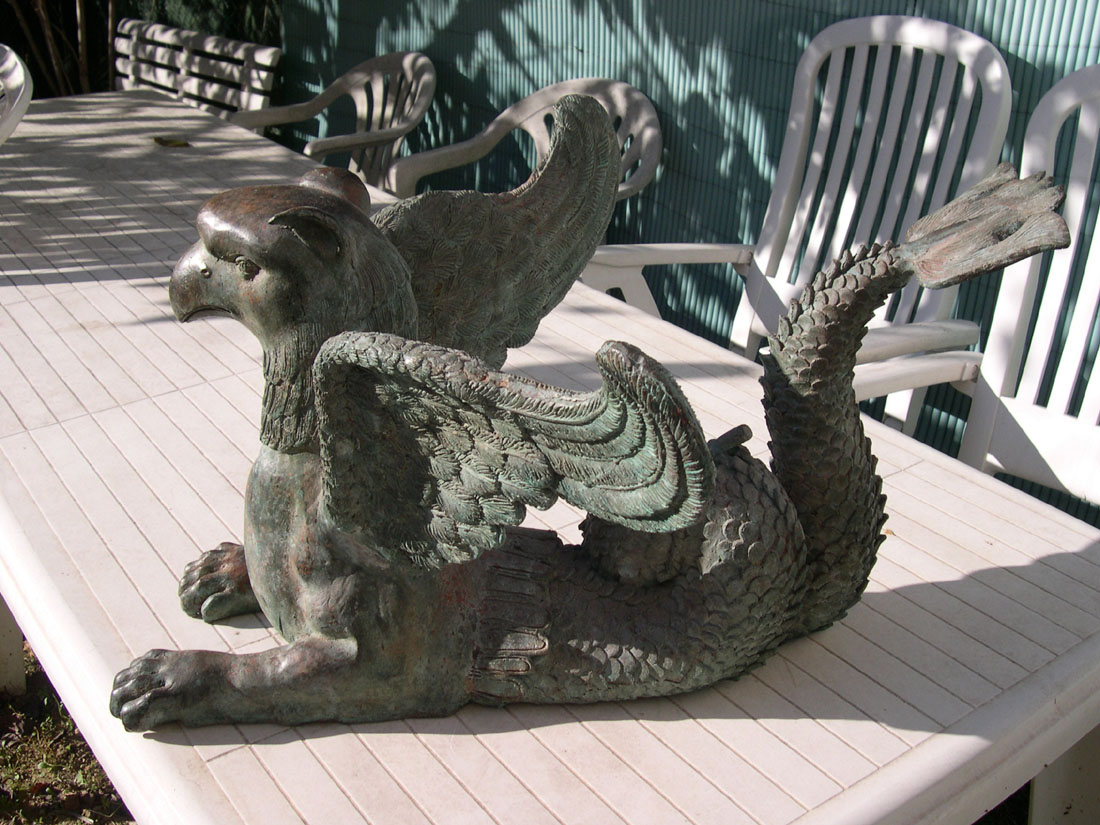

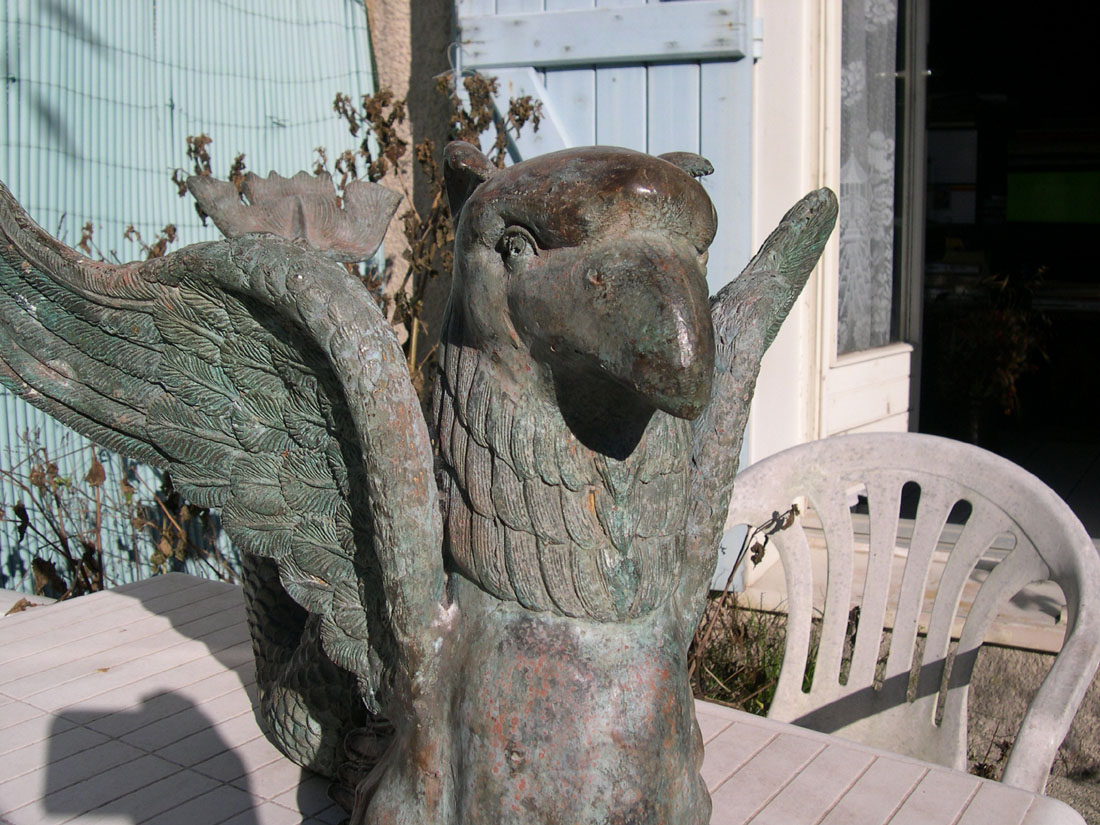
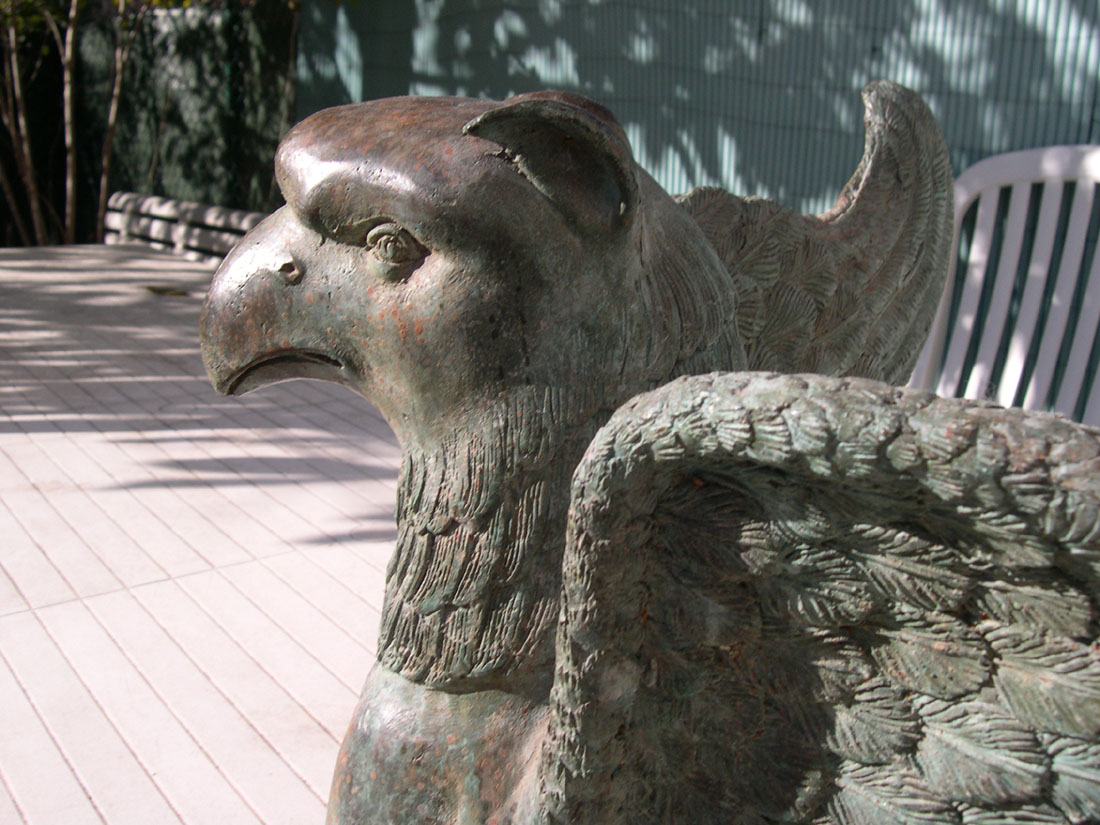
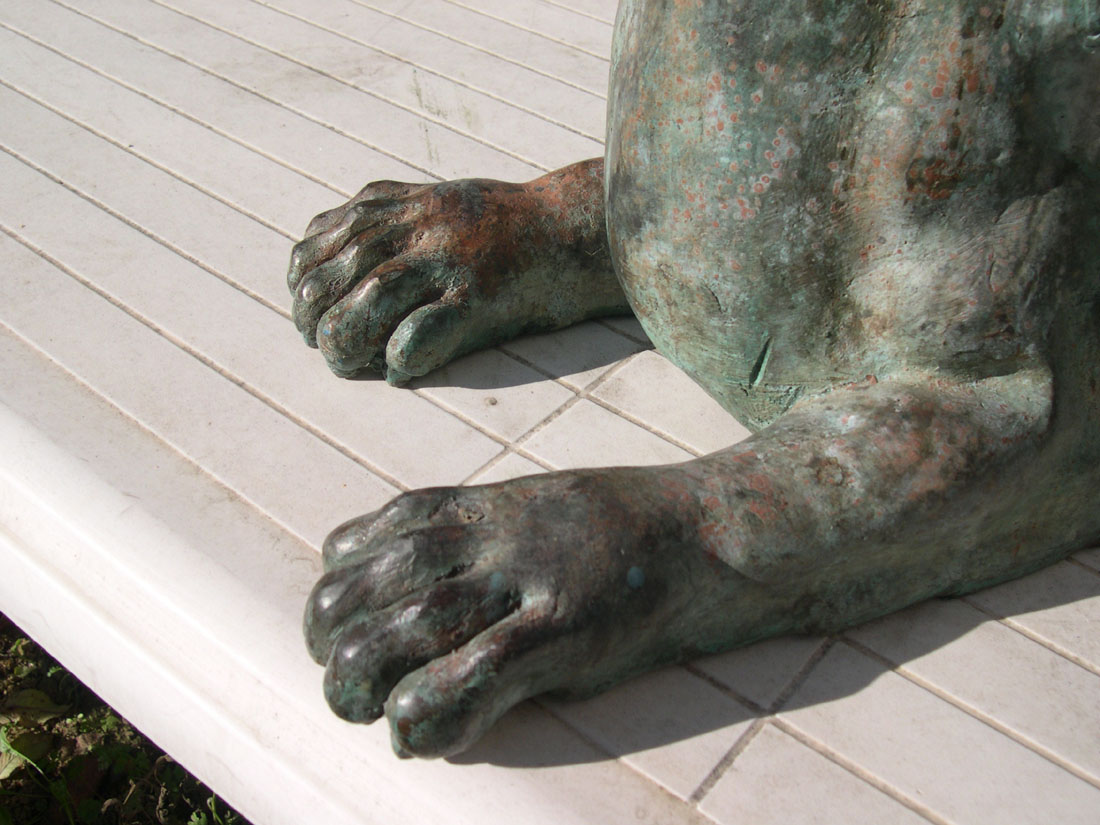
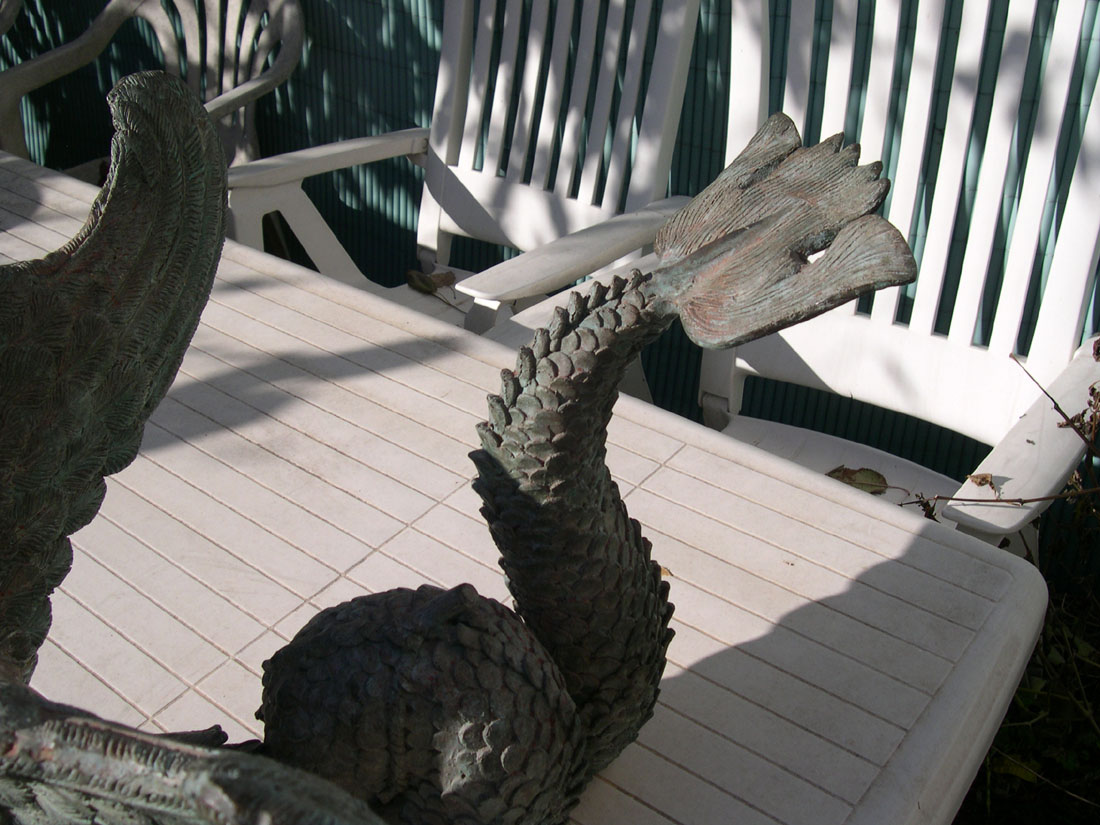
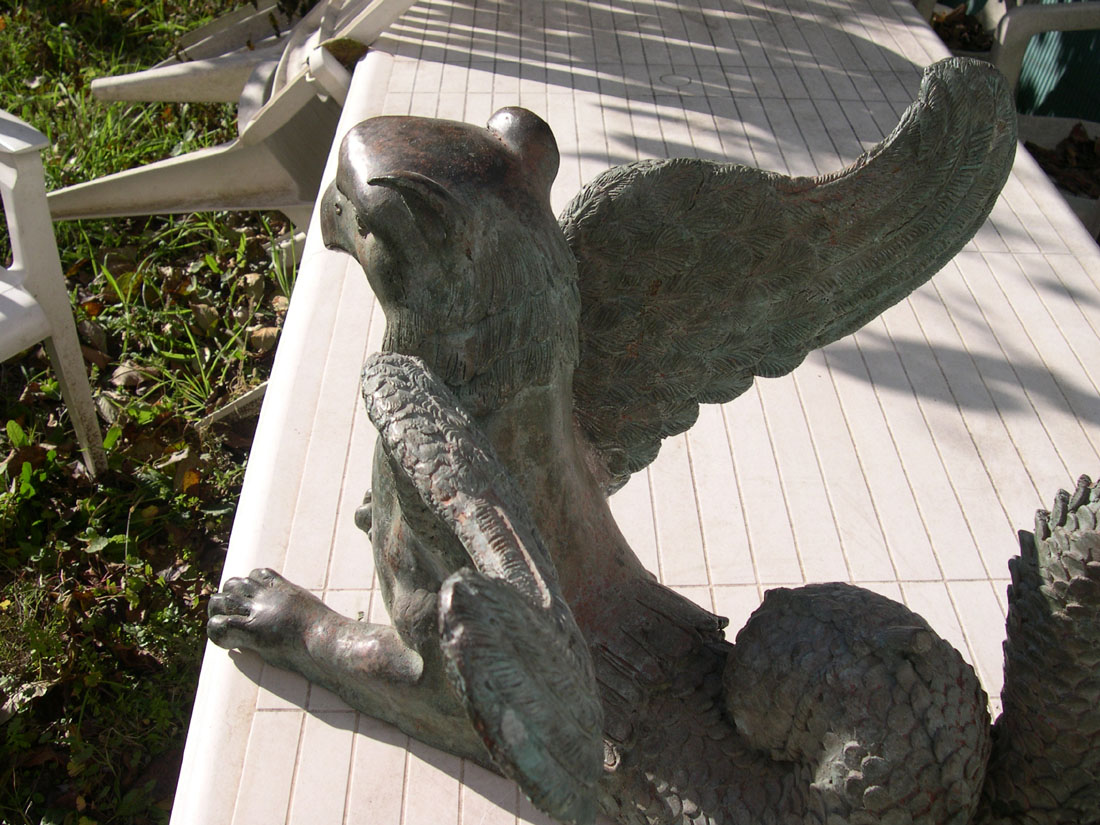
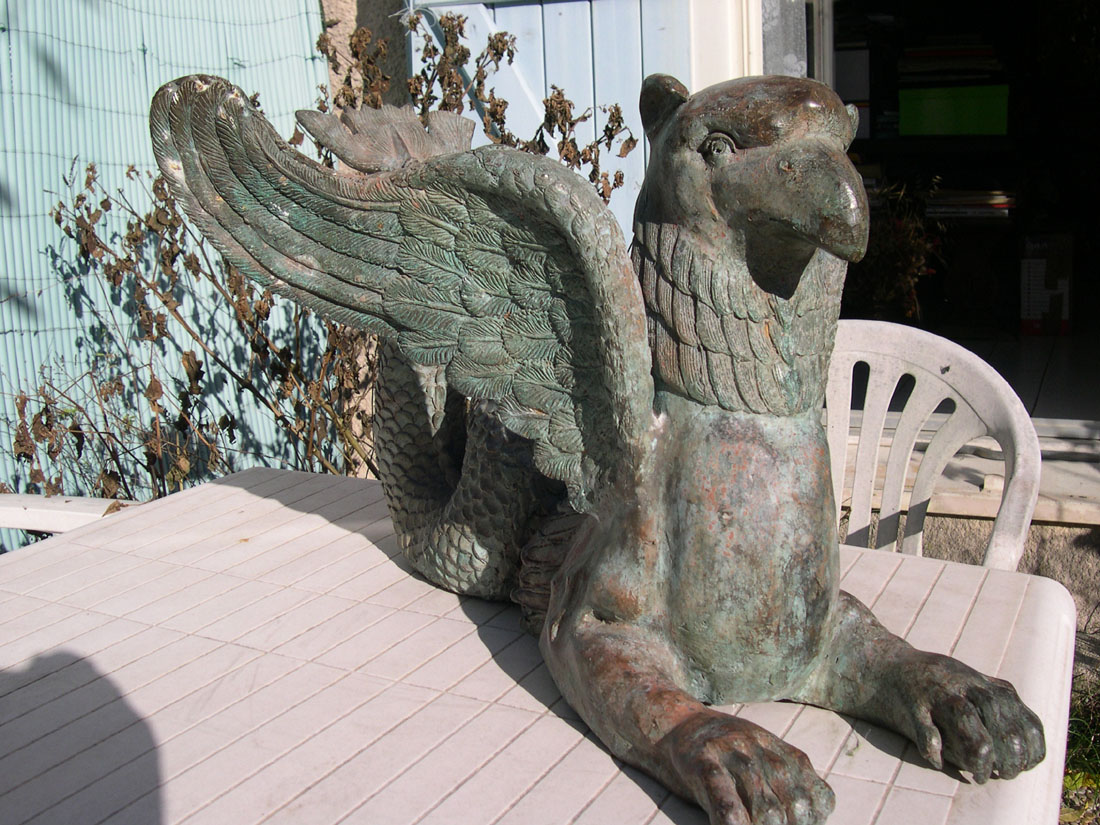
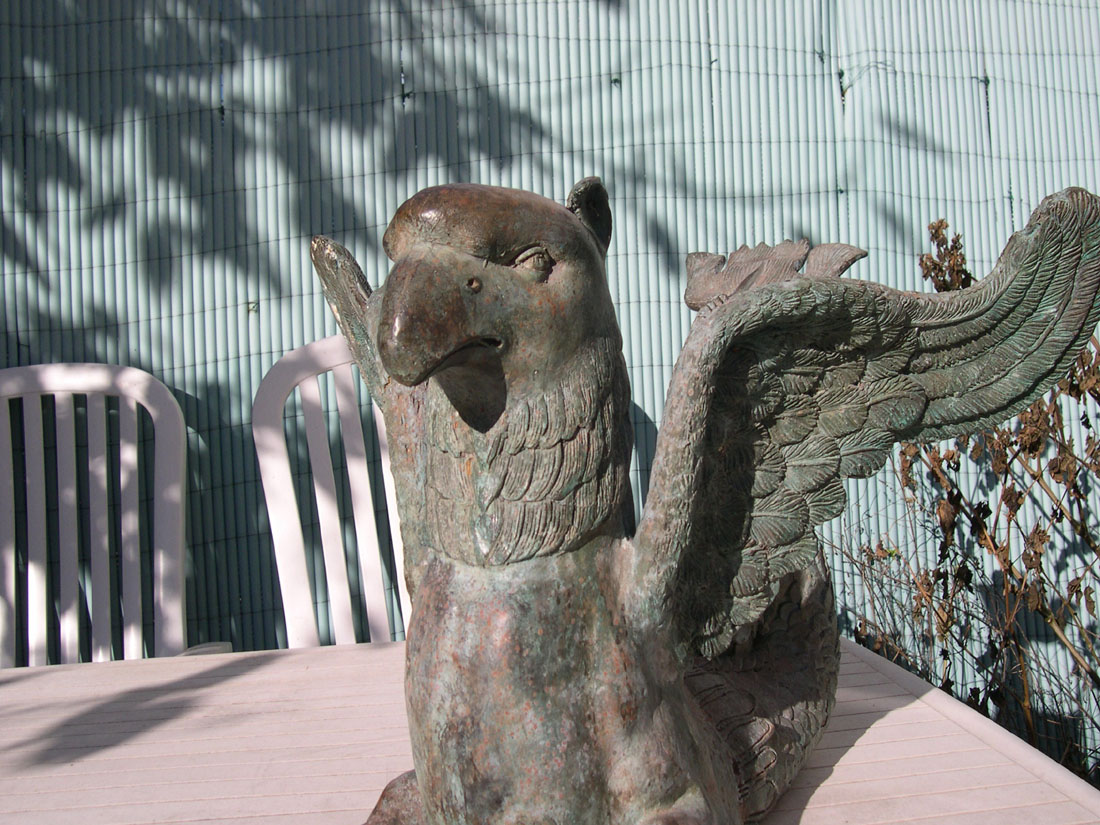
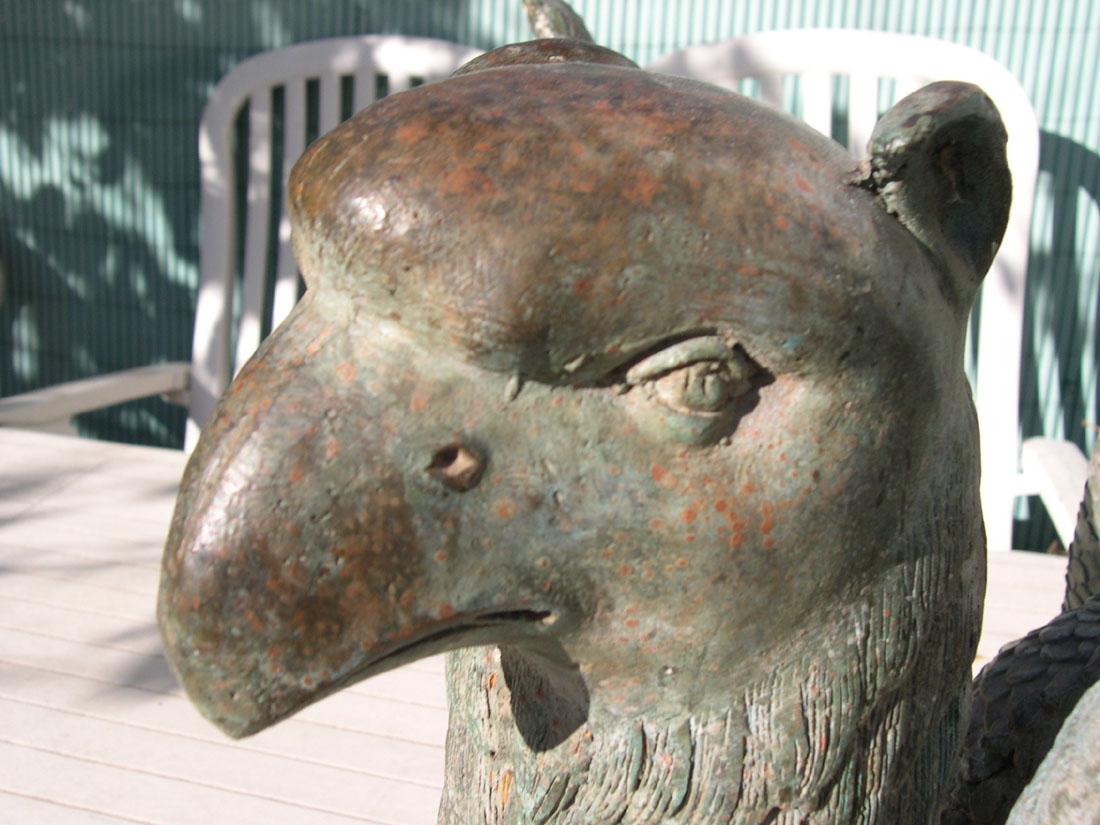
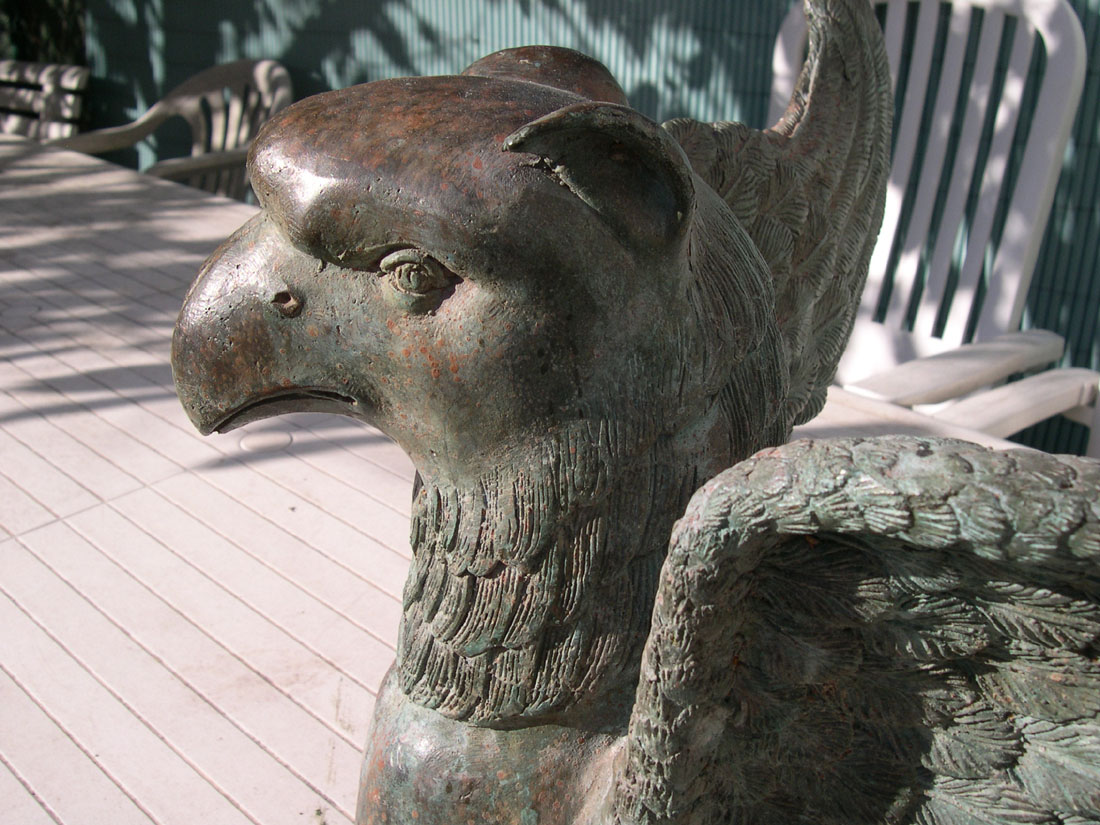
Lot description:
ARCHEOLOGIE GRECQUE- ROMAINE GRIFFON bronze du 1er-2ème Siècle
( Pièce exceptionnelle de Musée)











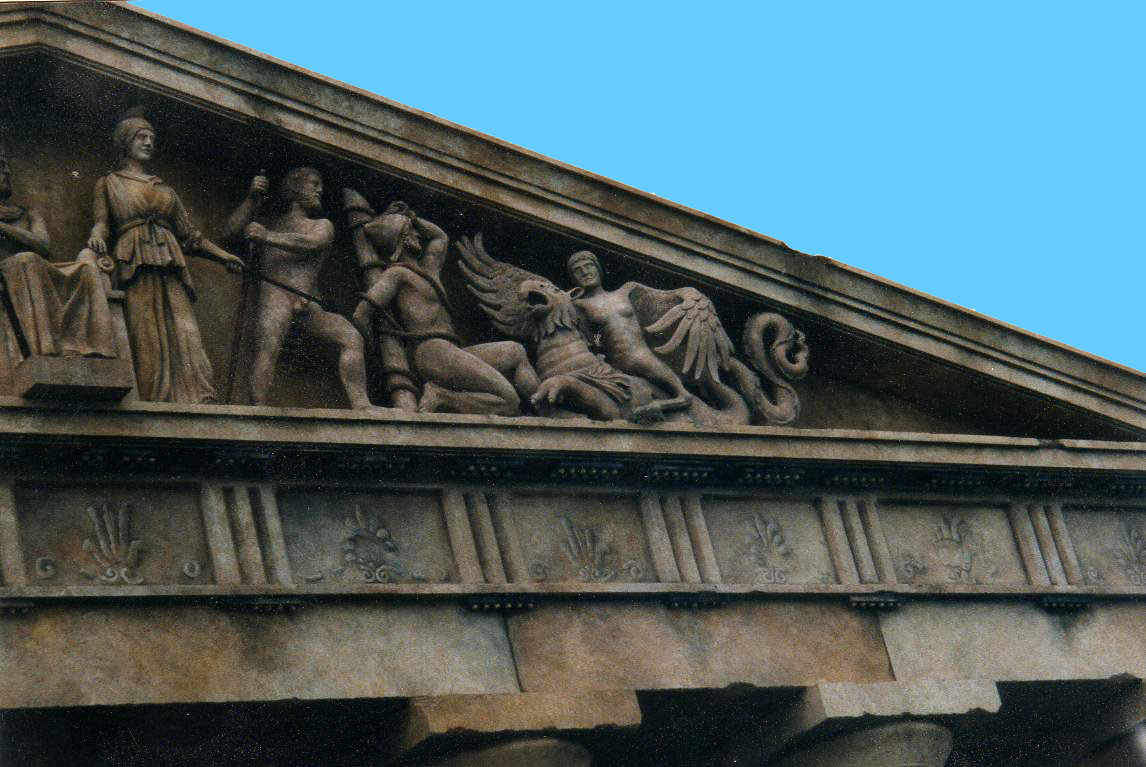
GRIFFON ou CHIMERE (KHIMAIRA) période romaine, trouvé sur un oppidum privé dans le L.R., authentifié par expert et par archéologue lors de la fouille. Tête et ailes d'aigle, corps et pattes de lion, queue de dragon. Cette gigantesque sculpture est intacte et à peine corrodée, pour avoir séjourné dans un milieu propice.
Caractéristiques: Bronze, poids 22kg, Taille: H=41cm, L=75cm, l=60cm
GRIFFON or CHIMERE Roman period, found on a private oppidum in L.R., authenticated by expert and archaeologist at the time of the excavation.
Characteristics: Bronze, weight 22kg, Taille: H=41cm, L=75cm, l=60cm
Ce Griffon exceptionnel est délivré avec certificat d'authenticité et expertise.
This exceptional Griffon is delivered with certificate of authenticity and expertise.
Le griffon chez les Grecs
Cet animal fabuleux est représenté avec un corps de lion, une tête et des ailes d'aigle. Chez les anciens Grecs, les griffons étaient censés être les gardiens des trésors de la terre. Grâce à son corps de lion, le griffon a la puissance et la majesté de cet animal. Il a le regard perçant de l'aigle et sa faculté à voler et à planer dans les airs.
Le griffon chez les Hébreux
Les Hébreux avaient fait du griffon le symbole de la Perse, dont la religion reposait sur les deux aspects de l'animal : le bien et le mal. La représentation de cet animal leur était familière puisqu'ils avaient été longtemps en contact avec cette civilisation lors de leur captivité à Babylone (quelque 500 ans avant Jésus-Christ).
Le griffon et la religion chrétienne, au Moyen Âge
Le symbolisme très fort du griffon qui allie les qualités du lion (roi des animaux) et de l'aigle (roi des airs) a fait que très rapidement cet animal fabuleux a été associé à la figure du Christ : dieu et homme, roi du ciel et de la terre. L'aigle symbolisait la part divine du Christ et le lion sa part humaine. Pendant tout le Moyen Âge, le griffon a été le symbole de la réssurection du Christ.
Les Croisés ont également associés l'image du griffon avec celle du Saint-Graal. Le Graal était selon les légendes arthuriennes une coupe en or sertie de pierres précieuses qui avait contenu le sang du Christ. Joseph d'Arimathie l'aurait transmise au roi Bron et à ses descendants.
Pour plus de détails sur le Graal et la quête du Graal, on peut lire "Perceval le Gallois" et "Le Lancelot" en prose de Chrétien de Troyes. Dans ces oeuvres, le poète nous raconte la quête des Chevaliers de la Table Ronde à travers le monde à la recherche du Graal.